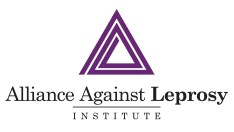About the disease
According to data from the Ministry of Health and the World Health Organization (WHO), 202,185 new cases of the disease were reported worldwide in 2020. Of these, 29,936 occurred in the Americas region and 27,863 (13.8%) were reported in Brazil, which corresponds to 93% of the number of new cases in the Americas.
Of the total number of new cases, 14,981 report the infection of children and adolescents under the age of fifteen. In Brazil, 1,545 children have been infected, 50 of whom have visible deformities or grade 2 disabilities (G2D) as a result of Hansen’s Disease.
The 2020 UN report is the most accurate picture of Hansen’s Disease in the world, because in subsequent years the recording of new cases has been hampered by the COVID pandemic. The next report is due to be published in September 2024, reporting data from 2023, the period in which registration forms and channels were re-established around the world.
Brazil ranks second among the countries with the highest number of cases in the world, behind only India. This scenario is aggravated by the difficulty in diagnosis that may be responsible for cases of late treatment. Only a few doctors are prepared to deal with it, which signals a sensitive underreporting of cases. Prejudice and lack of information cause patients to hide the disease and live in social isolation.
According to the Pan American Health Organization (PAHO), neglected diseases are restricted to tropical and subtropical regions with untreated water, poor housing conditions and inadequate hygiene and sanitation.
The World Health Organization (WHO) placed Hansen’s Disease on the list of neglected diseases, characterized as infectious pathologies that affect mainly those populations who live in extreme poverty.
There are currently around 3 million people affected by Hansen’s Disease in the world. Brazil is currently part of the list of 23 priority countries for Hansen’s Disease defined by the World Health Organization (WHO), which together account for 94% of the world’s Hansen’s Disease cases. In this list, India, Brazil, and Indonesia together account for 74% of the world’s cases.
In March 2023, the WHO held the first global meeting on skin-related neglected tropical diseases (skin NTDs) in Geneva (Switzerland). The discussions focused mainly on the progress and challenges in implementing integrated skin NTD activities at the national level, as outlined in the WHO NTD roadmap 2021-2030.
Dr. Laila de Laguiche attended the event, representing the AAL Institute, and was able to see the advances in research into skin NTDs. An important milestone in strengthening the network of specialists in neglected tropical diseases.
Transmission
Hansen’s Disease is contagious and transmitted through the airways, but 90% of the population is naturally immune. That is to say, the disease only manifests itself in 10% of the contaminated population. The afflictions manifest in those with a genetic predisposition who have been infected by the bacterium.
Diagnosis
About diagnosis go to: https://aal.org.br/hanseniase/teste-diagnostico/
Treatment
Hansen’s Disease has a cure, and its treatment is free of charge under the Brazilian Unified Health System (SUS), which offers antibiotics. The treatment takes at least six months, but it can last for years, depending on the type of disease.
